A 17th Century Livery Cupboard
Virginia (Black) Walnut
A 17th Century Livery Cupboard
Virginia (Black) Walnut

"Livery" refers to the nightly ration of bread, wine, and candles that would be portioned out to the family, guests, and servants of a household. In the medieval period, the cabinet where such supplies were kept was sometimes referred to as an "aumbry," though by the early modern period the term "cupboard" seems to have supplanted it. Such cabinets have openings, such as tracery or turned spindles, usually backed with coarse cloth. This allows ventilation while keeping out vermin, much like a modern pie safe.

Many such cupboards just have shelves inside, but as I've begun work on this project I've added some features for how we'll use this piece. There will be two shelves mid-way up, which will house a pair of drawers. And of course, there needs to be a secret compartment. Such features were more common in desks and spice cupboards, but for our purposes they will be handy for the storage of smaller items that often get lost in the larger chests.
I've also changed the design by adding a face frame. On the original you can see the edges of the carcase boards, and the doors are hinged on pins set into the top and bottom. I decided on a slighly more finished look, with a frame that covers the board edges. This gives me a surface to try my hand at using a molding plane to do some simple reed moldings. It also lets me use some really stylin' butterfly hinges I got from Nathan's Forge (they do nice work).
Another change from the original is in the pediment and fineals on top. Not being a skilled carver, it won't do anything to display my skill, and we could use the space to display our plate. So instead, I think I will do side and back moldings that will open the top for display and storage.
The original is probably oak, as are the other two in Yorkminster. Mine will be in American Black Walnut. Yes, I know that black walnut was not in common use in the early 17th century, and European walnut was much more commonly used for French furniture than it was for English. But living in Virginia, Virginia Walnut is common and relatively cheap. And I love how it looks with a simple oil finish.

Ripping down the thinner panels is a lot of work. I run the edge over the tablesaw to give me a good kerf to follow, then go at it with a hand rip saw. Here are a couple of pieces in rough-cut condition.
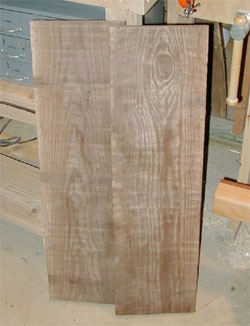
And here they are after a little sweat with the smoothing plane. I love the luster that black walnut gives under a sharp plane iron. These will make the top and sides of the carcase. I'll need to join up some narrower boards to make the bottom and back.

The shelves that house the drawers have to be narrower than the depth of the carcase to allow room for the drawer pulls, so they will be housed in stopped dados. Here they are marked out on the boards.

My method for stopped dados is to use a tenon saw to kerf in the sides, then just zip out the wood with a chisel.
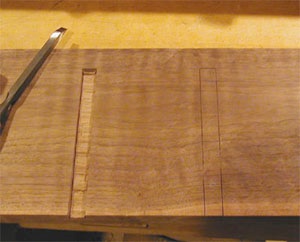
Then a check that everything is square.

Here's a side with all the rabbets and dados cut:
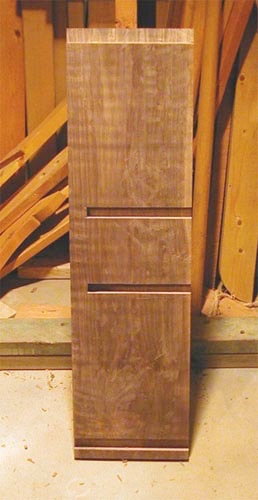
And with the carcase rough fitted. Ready to get started on the face frame and drawers:
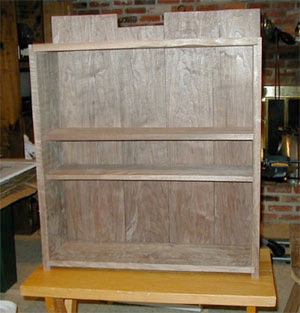
The face frame has blind mortise and tenons, and the door frames have through mortise and tenons. There are 24 spindles in the doors (6 in each panel). Like the original, there is variation from one to another, as I picked a profile that I could freehand without a lot of measuring or reference to a story stick.
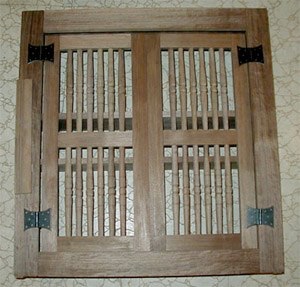
Here's one door, with the molding cut, pegged up and with the first coat of oil.
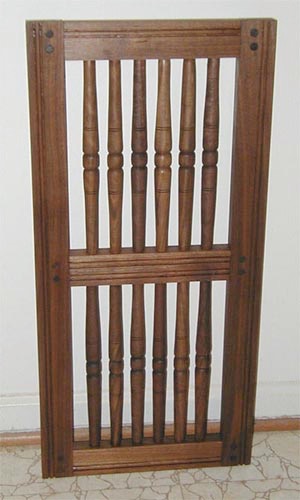
Between the shelves there are two simple drawers. Dovetails were not common in English joinery in this period, so they are simple nailed "boxes," riding on the bottom shelf. The boards that separate and house the drawers are pegged into the shelves from the top and bottom.
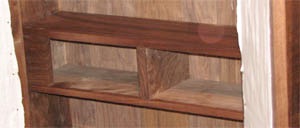
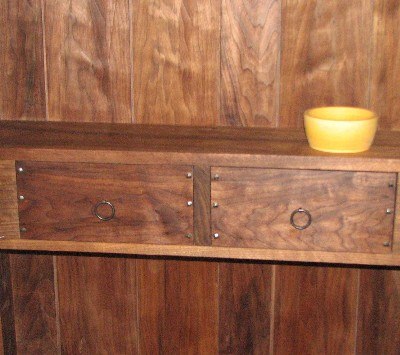

The panels across the back are lapped and nailed to the carcase.
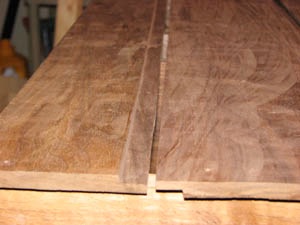
The cacase and doors completed:

Copyright 2019, Thomas Rettie.